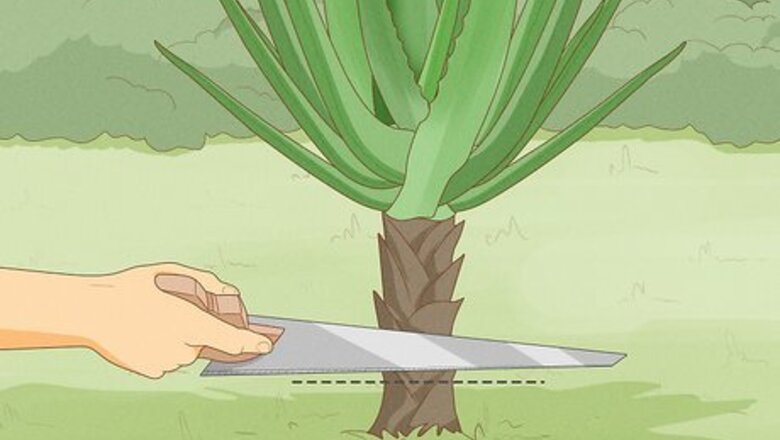
views
Digging Yucca Plants Out
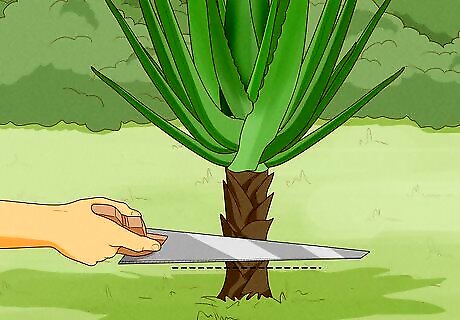
Use a saw or pruning shears to cut the yucca down to its stump. Cut off all branches, stems, and shoots that come from the main stump. Depending on the size of the yucca, the root system might be pretty large. Having the stump isolated will make it easier for you to see where you need to begin digging. You can discard of the yucca with your yard clippings. Alternatively, there are plenty of household uses for yucca, including soap-making, basket-weaving, and cooking.
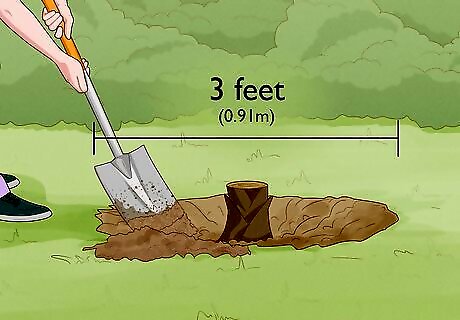
Dig a hole about 3 feet (0.91 m) around the base of the plant using a shovel. The root network for the yucca plant is very large, so you’ll want to start a hole that extends further than your stump. Set the boundaries by measuring from the center of the plant out to where your hole will start. If you don’t have much space around the yucca, digging might not be the best option for removal because it will require you to dig up other plants.
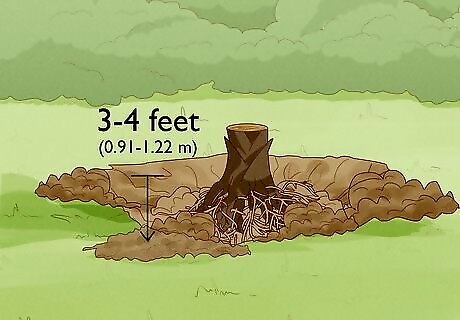
Dig 3 to 4 feet (0.91 to 1.22 m) into the ground. Yucca roots can grow deep into the ground, and you’ll want to remove as many as possible as you’re digging. Work your way from the outer edge of the hole into the plant, and keep digging until you stop encountering roots. If you hit a root, do not cut it, simply dig around it until you can remove it with the plant. Cutting the root will make it more difficult to remove.
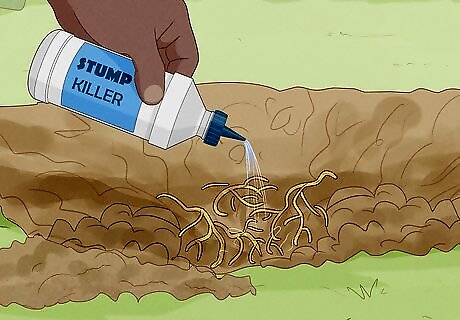
Check for additional roots and apply stump killer. Once the plant and roots are removed, inspect the hole and check if there are any more roots poking through the soil. If so, remove them to the best of your ability and apply stump killer, also known as potassium nitrate, to the soil near the roots. If you do apply stump killer, be aware that it will kill any plants in the surrounding areas. The soil will be ready for planting 2-3 months after applying the stump killer.
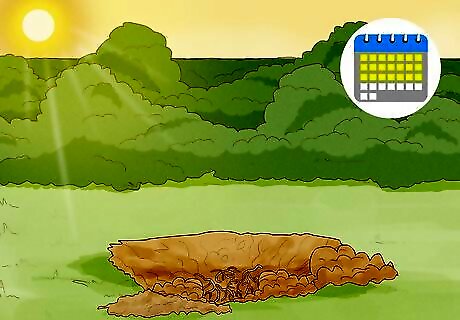
Leave the hole open for 2-3 weeks to allow the sun to dry the soil. Like many other plants, the yucca roots will dry out if exposed to sun. If you’ve missed any roots, leaving the hole open for a few weeks before replacing the soil will ensure that they dry out and die. For safety purposes, you might want to rope off the hole to prevent animals or children from tripping or falling into the hole and getting injured.
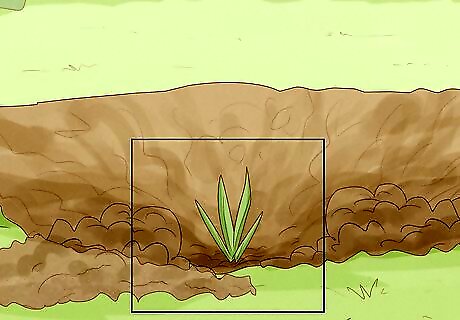
Monitor the area for new growth. Keep an eye on the area once you fill the hole back in. New growth can appear quickly, and you’ll want to dig up new shoots as soon as you see them. New growth can appear as late as a month after you refill the hole, so check back often and address new growth quickly by digging out the plant by its roots.
Applying Herbicide
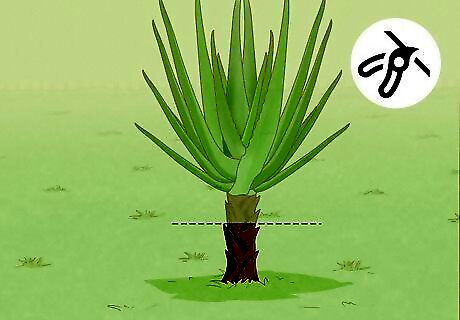
Use pruning shears to cut the plant down to its stump. Remove as much of the plant as possible by cutting back its vegetation until only the stump remains. This will make it easier for the herbicide to work on the roots, which are the most important part to kill. It’s best to begin this process in the spring or summer, when the plant is still growing and not as hardy. If the yucca is particularly large, it might be beneficial to use a saw to cut it down at the stump. If using shears, start by removing the top and working your way down to the stump, cutting off large portions at a time.
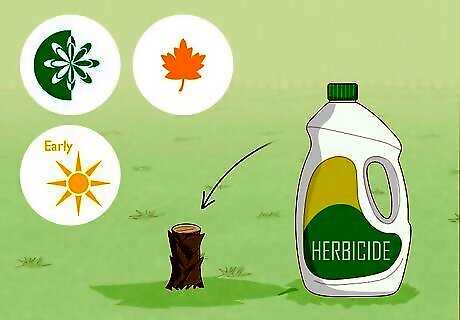
Plan to apply herbicide during the spring, early summer, or fall. Controlling yucca with herbicide requires proper timing and application. Spring, early summer, and fall are the best times to apply herbicide because herbicides are most effective when used within a certain temperature range. Read the label of the product you purchase to decide when to spray.
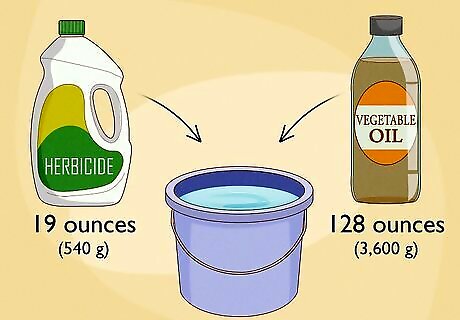
Mix 19 ounces (540 g) of herbicide and 128 ounces (3,600 g) of diesel or vegetable oil in your sprayer. The recommended herbicide is Remedy herbicide, which is specifically formulated for yucca and other hardy plants, and you can find it at most hardware stores. Pour the herbicide in first and then add the diesel or vegetable oil. Make sure to wear protective clothing when handling chemicals, such as long sleeves and pants, chemical resistant gloves, and eye protection. You can also buy pre-prepared mixtures of Remedy and diesel or vegetable oil, but they are more expensive and just as effective. If your sprayer isn’t large enough to hold the volume of the mixture, you can make the mixture in a 256 ounces (7,300 g) bucket.
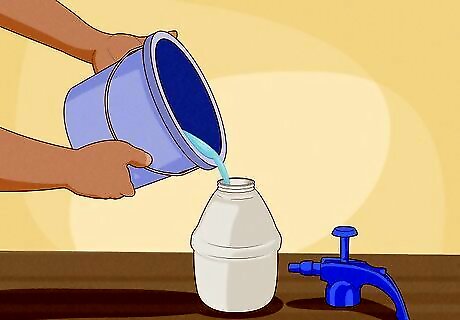
Transfer the mixture into the sprayer if you mixed in a different container. Use a funnel placed in the opening of the sprayer container to carefully pour the mixture into your sprayer. Be careful and pour slowly to avoid splashing or spilling the mixture. If all of the mixture doesn’t fit into the sprayer, you can store the excess in the bucket for up to a week. Make sure you cover it with a lid, towel, or piece of cardboard to prevent contaminants from getting into the herbicide.
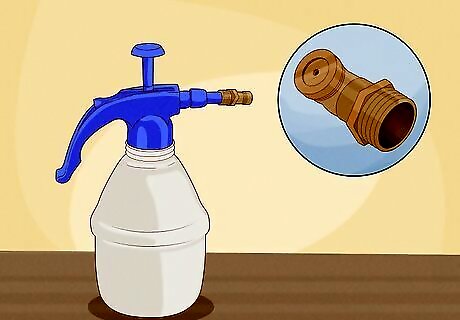
Attach the 5500-X1 nozzle to the sprayer. If your nozzle isn’t already attached, slip the 5500-X1 nozzle onto the tip of the sprayer. This nozzle will cause the mixture to be applied in a cone shape. Cone-shaped nozzles are great for applying herbicide because they allow for a more precise application, protecting the soil and other plants in your garden that you don’t want to harm.
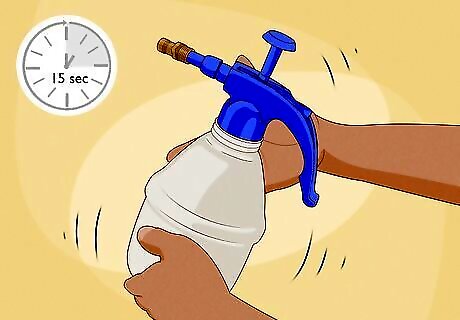
Shake or stir the mixture vigorously for 15 seconds before spraying. Once the mixture is made, stir it with a paint stirrer or shake it in the container to ensure that the oil and herbicide are well-combined. This will prevent the herbicide from settling at the bottom of the container. If you won’t be using the mixture right after you make it, be sure to agitate it by shaking or stirring before use.
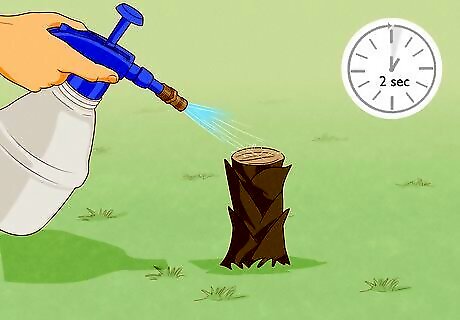
Spray the mixture onto the center of stump for 2 seconds. You can use a garden pump sprayer or backpack sprayer, both with the cone nozzle, to apply the mixture. Aim the nozzle at the very center of the stump and apply for 2 seconds. Count out loud to make sure that you’re applying the mixture for the full 2 seconds. Avoid spraying the mixture when the plant is wet. If it has rained the day of application, wait 24 hours for the plant to dry out completely.
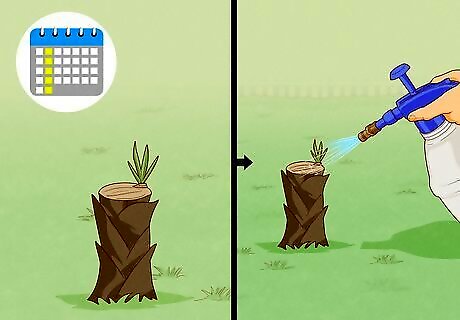
Monitor the area weekly for new growth. New shoots might appear after the yucca seems to be dead, so keep an eye on the sprayed area. Cut down new shoots to their stump as they appear and apply the herbicide mixture to the stump immediately. You can re-apply this mixture as needed whenever you see new growth. It can take up to 2 months before you have completely killed the yucca.

















Comments
0 comment